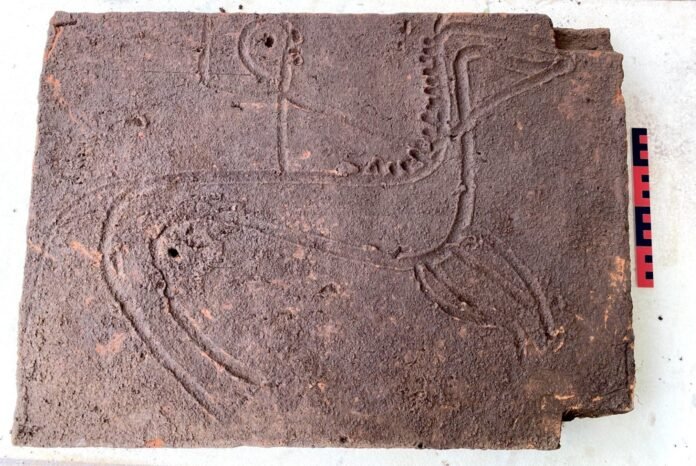
A team of archaeologists and law enforcement officials has uncovered ancient tombs in southern Italy, including what may be a warrior’s tomb, following an investigation into illegal construction that damaged a historical burial site.
Authorities announced the discovery on Wednesday, shedding light on a significant archaeological find linked to the region’s past.
The discovery was made in Contrada Cicirelli, near Padula, following reports last summer of unauthorized building work disturbing the land. A stable was under construction, but the project severely damaged several ancient graves.
Authorities quickly seized the site, halting all activity. Experts then launched an urgent excavation to recover and preserve the historical remains.
Ancient tombs date back to the 4th century B.C.
Archaeologists have identified 19 tombs, most constructed using large ceramic slabs arranged in a tent-like shape. Some graves contained bodies placed directly into pits, marked by large stones at the deceased’s head. Researchers have dated the burials to the late 4th century B.C.
Inside the tombs, archaeologists found black-glazed pottery and red-figure vases, often decorated with images of women. These artifacts likely came from workshops in the Lucania region, possibly in Vallo di Diano. Some vases were discovered outside the graves, suggesting they played a role in burial rituals.
Tomb 64: The warrior’s resting place?
One of the most remarkable findings was Tomb 64, which contained several black-glazed vases and a small, undecorated pot.
Archaeologists found a silver diobol coin, minted in Tarentum between 380 and 325 B.C. inside the pot. It featured Greek goddess Athena on one side and Hercules strangling the Nemean lion on the other.
A significant detail emerged on one of the slabs covering the tomb. Before being hardened in a kiln, someone had engraved an image of a man riding a galloping horse.
The rider, wearing a helmet, has an arm raised as if preparing to throw a spear. Experts believe this suggests that the tomb belonged to a warrior, possibly an important figure in his community.
Weapons and household objects indicate a high status
In another grave, archaeologists uncovered a krater, a large vessel linked to drinking ceremonies, along with an iron knife, a bronze belt, metal spits, two fire supports, and a lead candelabrum.
The bronze belt, worn by the deceased at burial, suggests another warrior’s grave. Meanwhile, the presence of household items indicates the individual may have held an important social role.
Tombs may be linked to ancient settlement
The graves’ layout and the range of objects found suggest the burial site may have been connected to an ancient settlement or farm from the same period. Experts believe further excavations could provide more insight into the lives of the people buried there.
Authorities emphasized the need to protect cultural heritage, warning against damage to historical sites. The warrior’s tomb in Italy is a striking reminder of the region’s deep history and the importance of continued preservation efforts.
